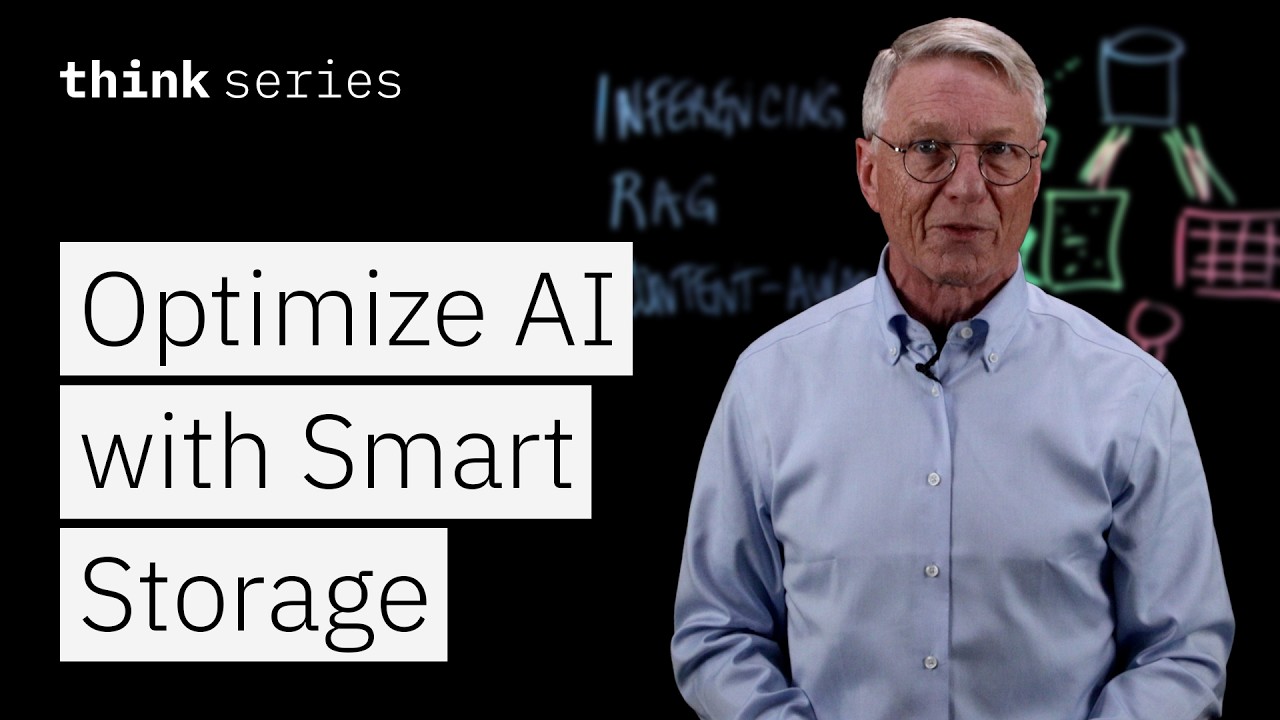The video explains how content-aware storage enhances AI assistants and agents by using retrieval augmented generation (RAG) to access and semantically understand diverse, unstructured data beyond their training sets, enabling more accurate and contextually relevant responses. It highlights key technologies like AI-optimized storage, data pipelines, vector databases, and accelerator chips as essential components for building scalable, efficient AI systems that meet the demands of modern enterprises.
The video discusses the growing complexity of AI assistants and agents, which rely on reasoning and querying large language models to provide accurate answers. However, these AI systems face a challenge: to generate precise responses, they need access to information beyond their original training data. This is addressed through a process called retrieval augmented generation (RAG), which enhances AI tools by enabling them to retrieve additional relevant information before generating a response. Much of this information exists in unstructured formats such as PDFs, presentations, audio, video files, and social media posts, often stored behind corporate firewalls, making it difficult to access.
To overcome this challenge, the concept of content-aware storage is introduced as a critical component of RAG. Content-aware storage leverages natural language processing to extract semantic meaning from diverse data types, distinguishing nuances such as the difference between “driving a car” and “driving a hard bargain.” This smarter storage approach enables AI systems to deliver more accurate and contextually relevant answers by unlocking the deeper meaning embedded in the stored data.
The video outlines several key components that make content-aware storage effective. First is AI-optimized storage, designed to handle the high data throughput demands of AI workloads with speed, scalability, and resilience. Next are AI data pipelines, which streamline the flow of data to and from AI models, preventing bottlenecks and ensuring efficient processing. Vector databases play a crucial role by organizing and indexing data based on semantic similarity, facilitating the grouping of related words and phrases. Finally, powerful AI accelerator chips enable rapid parallel processing, making inferencing fast and efficient.
Content-aware storage finds practical applications in various AI-driven scenarios. It enhances AI assistants and agents, such as chatbots and virtual assistants, by enabling them to provide faster and more accurate responses. It also supports real-time data synchronization, ensuring AI models work with the most current information to maintain relevance and trustworthiness. Additionally, optimized AI data pipelines improve overall workflow efficiency, and AI-powered search engines benefit from content-aware storage by delivering more targeted and effective search results.
In conclusion, the video emphasizes the importance of content-aware storage in the era of enterprise AI. By integrating AI-optimized storage, advanced data pipelines, vector databases, and hardware accelerators like GPUs, organizations can build AI systems that are smarter, faster, and more scalable. This foundation is essential for maximizing the performance and capabilities of AI assistants and agents, enabling them to meet the growing demands of individuals, teams, and enterprises in today’s AI-driven world.
